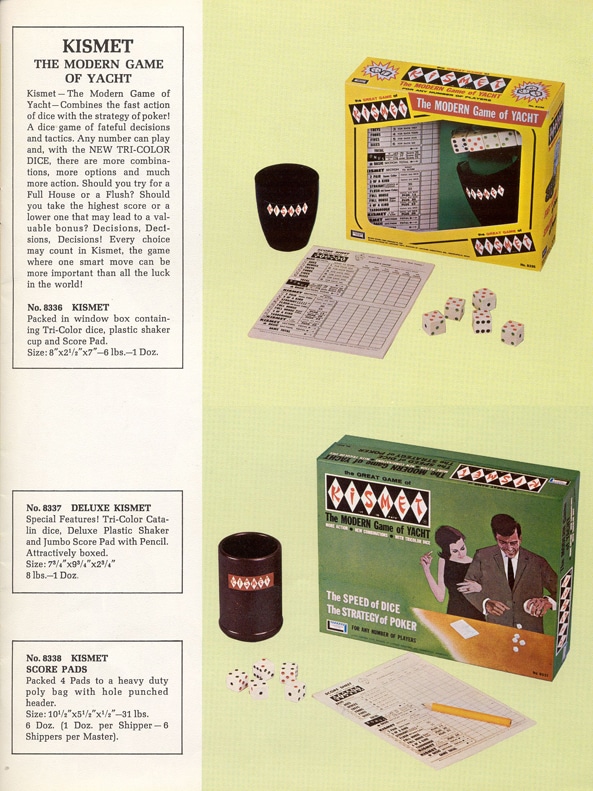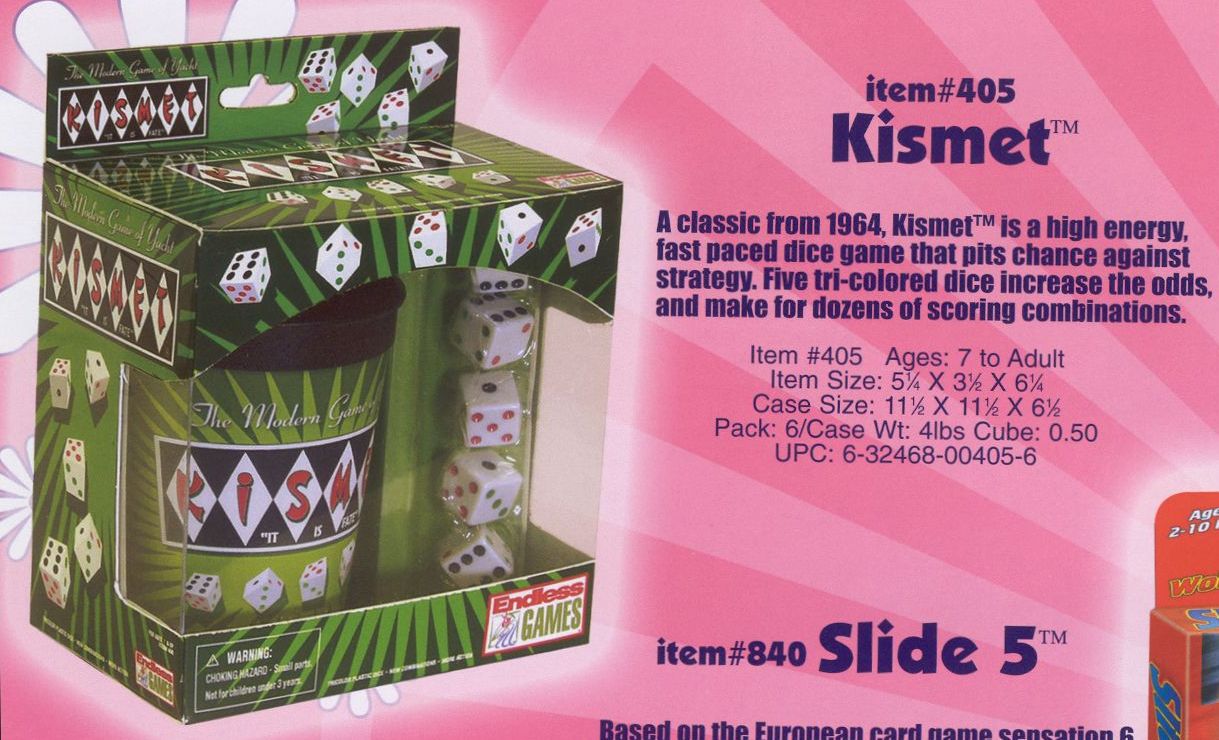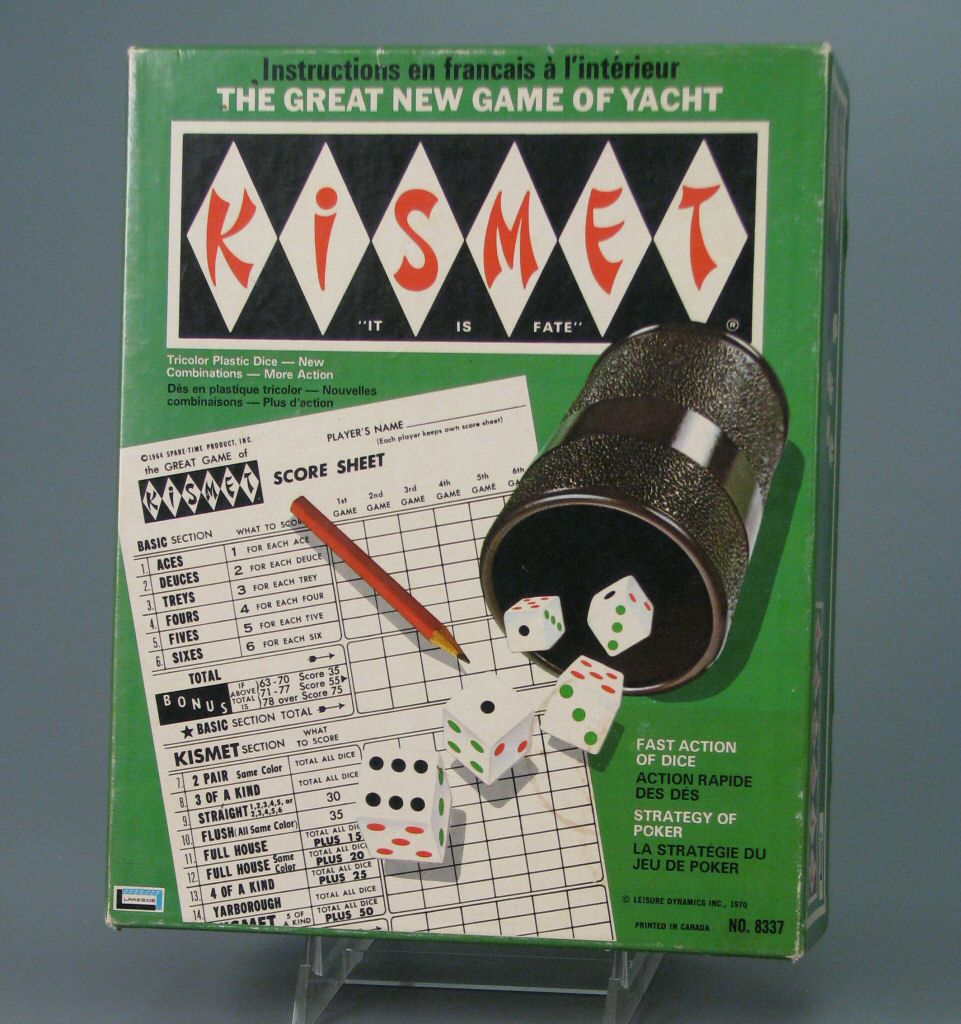 My grandmother loved to play all kinds of games. In fact, I probably inherited my love for games from her. When my sister and I would show up on Nana’s doorstep and ask her to play a game with us, she would stop whatever she was doing and say, “Go pick out a game from the closet.” The closet’s trove of options included games such as Trouble, Sorry!, Po-Ke-No, and Don’t Spill the Beans. But our number one pick was the dice game Kismet. Kismet was my grandmother’s favorite as well, and she loved to play it when she and her sisters gathered together, too.
My grandmother loved to play all kinds of games. In fact, I probably inherited my love for games from her. When my sister and I would show up on Nana’s doorstep and ask her to play a game with us, she would stop whatever she was doing and say, “Go pick out a game from the closet.” The closet’s trove of options included games such as Trouble, Sorry!, Po-Ke-No, and Don’t Spill the Beans. But our number one pick was the dice game Kismet. Kismet was my grandmother’s favorite as well, and she loved to play it when she and her sisters gathered together, too.
While searching through the catalogs in the Brian Sutton-Smith Library and Archives of Play, I discovered 30 catalogs featuring Kismet from the Stephen and Diane Olin Toy Catalog Collection, going all the way back to a 1967 advertisement for the game. Lakeside Toys introduced Kismet a couple years earlier in 1964. But Kismet has stood the test of time in an often fickle market and is still available today from Endless Games.

Based on the classic dice game Yacht, Kismet is played in a similar fashion to Yahtzee. However, the difference is in the dice. In Yahtzee all of the dots (or pips) on the dice are black, whereas in Kismet the dice are tri-colored, adding an extra dimension of game play. In Kismet the numbers 1 and 6 are represented by black pips, numbers 2 and 5 use red pips, and numbers 3 and 4 use green pips. Adding different colors creates additional scoring options such as “2 Pair same color,” “Full House same color,” and a “Flush” (all of the dice must be the same color).
Scoring is similar in the two games, but Kismet includes tri-level scoring in the Bonus section versus the flat rate Bonus in Yahtzee. Also, instead of the “Chance” in Yahtzee, Kismet features the “Yarborough,” a section reserved for a roll of the dice that didn’t fit any other category. The “Yarborough” was always a welcome alternative to putting a zero on the score pad in some other field. Although Kismet is a game of chance, my Nana taught us strategies such as trying to complete the more difficult fields on the score sheet first before moving on to the easier ones.
 Kismet is so ingrained in my family that my father even named his dog Kismet. A few years ago, Dad purchased vintage Kismet games for my brother, sister, and me through an online auction site. Once the box landed in my hands, the memories came flooding back. For me, Kismet was more than just a game—it was an experience, one shared frequently with my grandmother, my sister, and my cousins in my youth. In fact, my family jokes when we hear thunder it’s not really the weather, it’s my Nana and her sisters shaking their Kismet dice somewhere in the universe. Now it’s my turn to keep those Kismet dice rolling with the next generation of my family.
Kismet is so ingrained in my family that my father even named his dog Kismet. A few years ago, Dad purchased vintage Kismet games for my brother, sister, and me through an online auction site. Once the box landed in my hands, the memories came flooding back. For me, Kismet was more than just a game—it was an experience, one shared frequently with my grandmother, my sister, and my cousins in my youth. In fact, my family jokes when we hear thunder it’s not really the weather, it’s my Nana and her sisters shaking their Kismet dice somewhere in the universe. Now it’s my turn to keep those Kismet dice rolling with the next generation of my family.



